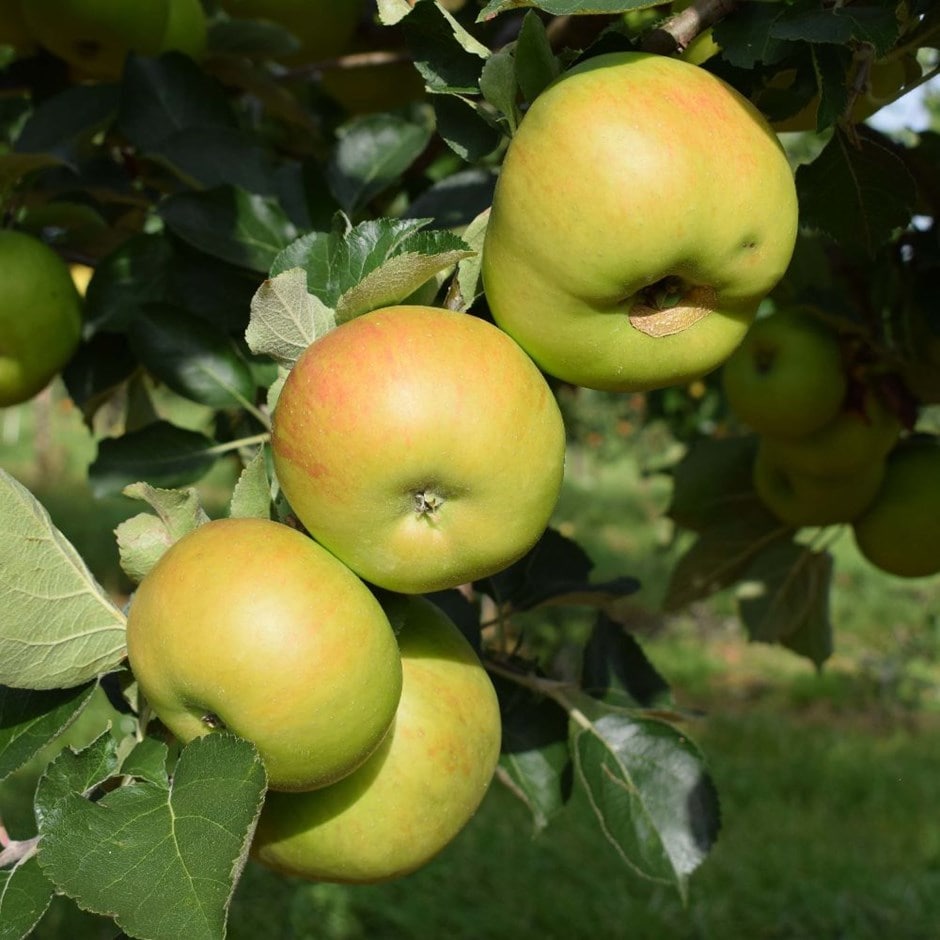apple 'Bramley's Seedling'
cooking apple
- 9 litre pot | M26 root stock | 1.2m
- £49.99
- In stock (shipped within 3-5 working days)
- bare root | M26 root stock | 1.2m
- £32.99
- available to order from autumn 2024
Delivery options
- Standard £7.95
- Position: full sun
- Soil: moderately fertile, moist but well-drained soil
- Rate of growth: fast
- Flowering period: April to May
- Hardiness: fully hardy
Discovered growing in a Nottinghamshire garden in 1856, 'Bramley's Seedling' is often described as the best of the cooking apples. Producing a mass or pale pink flowers in spring, followed by a crop of large green (sometimes red flushed) fruit that can be used from November to February, this is a both a handsome and productive tree.
Pollination information: This apple belongs to pollination group 3, but it is also a triploid (T) so you will need to plant two other different varieties of apples to guarantee cross-pollination, and a subsequent bumper crop. Ideally these should come from the same pollination group, however it is possible to use ones from group 2 and 4 as well.
Pollination information: This apple belongs to pollination group 3, but it is also a triploid (T) so you will need to plant two other different varieties of apples to guarantee cross-pollination, and a subsequent bumper crop. Ideally these should come from the same pollination group, however it is possible to use ones from group 2 and 4 as well.
When planting your apple tree, prepare a hole up to three times the diameter of its root system. Fork over the base of the pit in readiness, incorporating plenty of organic matter into the backfill and planting hole. Avoiding frozen and waterlogged soil, trees should be planted out as they arrive. If you've ordered a bare root tree, soak the roots in a bucket of water for half an hour prior to planting - or if this is not possible, they can be heeled in temporarily, covering their roots with soil, or potted up. Once in the ground, stake firmly and keep the base weed-free. Apply a balanced fertiliser in early spring to support growth and fruiting and provide regular watering during hot, dry spells. The main winter prune, avoiding frosty conditions, involves removing dead, dying, and diseased wood to create an open crown. Additionally, reduce leaders and laterals by a third to establish an airy structure without crisscrossing branches. In August, summer prune by shortening side shoots longer than 20cm (8”) back to three leaves, promoting fruit ripening and encouraging more fruit buds.
